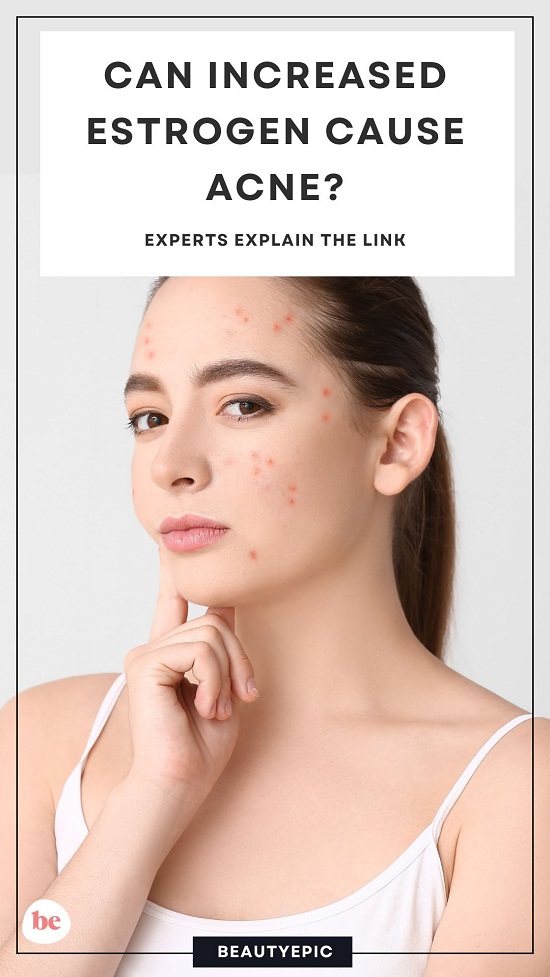
Important: This article is for informational purposes only. Please read our full disclaimer for more details.
So let’s talk about what happens when estrogen goes haywire. Get too much of it, specifically estradiol (a type of estrogen), and you’re not just dealing with pimples. We’re talking about a reduced mojo, feeling blue, brittle bones, and even higher chances of some serious issues like uterine and breast cancer. Swing to the other side with not enough, and you might notice the scale creeping up and your heart not quite keeping up.
Article Contains
Impact of Estrogen Levels on Acne
The fascinating part is how estrogen can also give your skin a helping hand by keeping oil production in check. Proper levels of estrogen can lower sebum production, meaning fewer annoying breakouts. This magic trick happens because estrogen bumps up the levels of something called sex hormone-binding globulin (SHBG), which swoops in to balance those hormones, giving your skin a fighting chance.
If estrogen’s doing the tango too high or too low consistently, it might be a hint of deeper health stuff going on. You might find yourself dealing with things like infertility, a tanked libido, or even gynecomastia for the fellas, which makes keeping those hormones level pretty crucial for feeling good in general.
Hormonal Changes During Puberty
Oh, puberty—you awkward, spotty, rollercoaster of a time. When testosterone starts pumping during those teenage years, it’s a green light for acne. More testosterone equals more oil, turning your face into oily central and inviting acne to move right in. Fun fact: about 80% of folks aged 11 to 30 get hit by acne, but it really goes to town on those between 14 and 19.
Grasping what’s going on with these hormones is like getting the cheat sheet to tackling your skin problems head on. By understanding how hormones tick and their impact on your skin, you’re equipped to make smarter decisions for your skin health and overall vibe.
If you’re finding teenage skin a bit much or those pesky breakouts won’t quit, check out some treatment options for hormonal acne that could put you on the path to smoother, happier skin.
Managing Hormonal Acne
Treatment Options for Hormonal Acne
Let’s chat about clearing up hormonal acne. We’ve got a few solid methods to tackle those pesky breakouts triggered by fluctuating hormones.
Top on the list is hormonal therapies. If the usual suspects like antibiotics aren’t doing the trick, docs might suggest anti-androgen hormone meds or birth control to shake up hormone levels and curb those flare-ups. Birth control pills like Yaz (yes, that’s its street name) often help by messing with testosterone and boosting SHBG, all science-y words for getting skin in check.
Then there’s the all-star androgens blockers. Names like spironolactone, cyproterone acetate, and flutamide might sound like a spelling bee nightmare, but they work wonders by telling your oil-making glands to chill out, cutting down on sebum and inflammation (NCBI). Spironolactone, in particular, has been around longer than most of our wardrobes and keeps on proving its worth against acne and that unwanted fuzz.
Here’s the lowdown on treatment options:
| Treatment Option | What It Does |
|---|---|
| Oral Contraceptives | Like Yaz, they reel in androgen levels, saying goodbye to acne spots. |
| Androgen Receptor Blockers | Spironolactone is like a T-receiver bodyguard, reducing annoying oiliness. |
| Hormonal Therapy | A mix of meds targeting those wild hormone swings for acne control. |
We can’t ignore those daily skincare struggles, either. Pairing these treatments with the right face moisturizers and spot busters can seriously up the game.
Ultimately, the key is customizing a plan that suits our skin’s needs and always being ready to chat with healthcare pros to find what clicks. Our skin deserves the best, and with some effort, you’ll get it glowing.
















